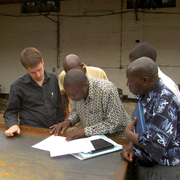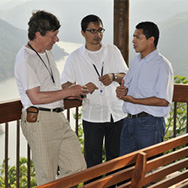ValuES supports capacity building through different training courses related to ecosystem services. The courses can be run within the framework of a policy advice process or to support the implementation of concrete policies and measures. At the end of the training courses, participants have the opportunity to ground what they have learned in the real world by planning concrete measures. The training courses can be combined and adjusted to the specific situation and needs of the participants.

The main goal of this training course is to familiarize participants with basic concepts and approaches related to ecosystem services (ES). Participants learn about different types of trade-offs that are associated with ES, related challenges in implementing policies and measures as well as possible ways to assess and overcome such challenges.

This training module builds upon the foundation set by the “Integrating Ecosystem Services into Development Planning” (IES) training and dives deeper into the challenges of ecosystem services assessments and their integration into policy and planning. The training discusses the main characteristics of ecosystem services, the importance of trade-offs, spatial and temporal dynamics, policy entry points, policy and research questions, the construction of appropriate indicators of ecosystem services, and elements of influencing and communication skills. It further provides guidance on finding effective and suitable solutions for policy issues, and participants receive an overview of various assessment methods, tools and strategies that ensure that assessments have a lasting policy impact.

This training course offers a general introduction to basic economic concepts, gives an overview of some principles of environmental economics, and provides a general understanding of different economic valuation methods with their pros and cons as well as an overview on how valuation can be integrated or used to improve policies and measures. Different methods and approaches are then tested in interactive exercises, creating a learning experience that builds upon participants´ own knowledge and interactions with other trainees.

This training course provides an introduction to the theoretical and practical starting points for integrating ecosystem services into development planning. It applies the 6 Steps approach to aid participants in recognizing the linkages between ecosystem services and development, learn about tools and methods for assessing and valuing ecosystem services and understand the main policy options and instruments to integrate ES into decision-making.

One specific instrument to capture the value of ecosystem services are payments for ecosystem services (PES). A PES scheme can be designed in various different ways, based on the intended outcomes and target areas. In this training module, the basic characteristics of a PES scheme as well as fundamental design choices are discussed based on a fictitious case study. This training course was designed to deal with PES schemes related to watersheds, biodiversity and carbon markets. The course addresses PES schemes as specialized local projects or individual initiatives, rather than large-scale national PES programs. In this way, participants will be informed about the mechanics and logics behind a PES scheme and will not be distracted by institutional and political complexities of nationwide PES programs. During the training, the exercises and cases progressively increase in scale and complexity.

This training course examines the complexities of Environmental Fiscal Reform (EFR). EFR refers to a range of taxation and pricing measures which can raise fiscal revenues while furthering environmental goals. Instruments subsumed under EFR are, for instance, green taxes, fees or financial incentives to promote environmentally friendly consumption and production patterns, and the removal of harmful subsidies. The training allows participants to learn about the different instruments and see for themselves the intended and unintended consequences of their use. The goal is to learn how these fiscal instruments can be combined to promote more sustainable development paths.